Is this a severe infection
LockBit ransomware is a severe malware infection, categorized as ransomware, which could do serious harm to your computer. You might not necessarily have heard of or encountered it before, and to find out what it does may be particularly surprising. Ransomware uses powerful encryption algorithms for data encryption, and once they are locked, your access to them will be prevented. Because ransomware victims face permanent file loss, it’s categorized as a highly dangerous infection. 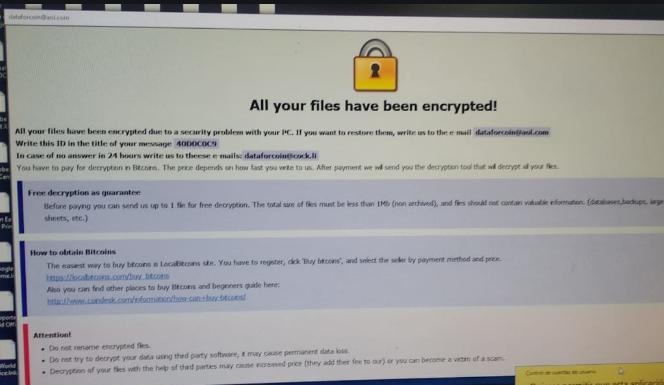
You will be given the option of paying the ransom but that’s not the best idea. Before anything else, paying won’t ensure that files are restored. Why would people who encrypted your data the first place help you recover them when they could just take the money you give them. Furthermore, your money would also support their future malware projects. Would you really want to support something that does billions of dollars in damage. People are also becoming increasingly attracted to the business because the amount of people who comply with the requests make file encoding malicious software very profitable. Investing the money that is requested of you into some kind of backup may be a better option because losing files would not be a possibility again. If backup was made before the ransomware contaminated your device, you can just eliminate LockBit ransomware and proceed to unlock LockBit ransomware files. Information about the most common distribution methods will be provided in the following paragraph, in case you are unsure about how the ransomware managed to infect your system.
Ransomware distribution ways
Email attachments, exploit kits and malicious downloads are the distribution methods you need to be cautious about. Because users tend to be rather careless when dealing with emails and downloading files, there is often no need for ransomware spreaders to use more elaborate ways. More sophisticated methods could be used as well, although they are not as popular. All criminals need to do is add a malicious file to an email, write a semi-convincing text, and falsely claim to be from a credible company/organization. You will frequently encounter topics about money in those emails, as those kinds of delicate topics are what users are more likely to fall for. If crooks used a big company name such as Amazon, people lower down their guard and might open the attachment without thinking if criminals just say questionable activity was noticed in the account or a purchase was made and the receipt is added. There are certain signs you ought to look out for before opening email attachments. Firstly, if you do not know the sender, check their identity before opening the attachment. Don’t make the mistake of opening the attachment just because the sender appears legitimate, first you’ll have to double-check if the email address matches the sender’s real email. Look for evident grammar mistakes, they’re usually glaring. The greeting used may also be a clue, a legitimate company’s email important enough to open would include your name in the greeting, instead of a generic Customer or Member. Weak spots in a system could also be used by ransomware to get into your system. Those vulnerabilities in programs are commonly fixed quickly after their discovery so that malware can’t use them. Still, as world wide ransomware attacks have proven, not all people install those patches. You are recommended to update your software, whenever an update becomes available. You may also choose to install updates automatically.
How does it act
Ransomware will begin looking for certain file types once it enters the computer, and when they’re identified, they will be encrypted. You might not see at first but when you can’t open your files, it’ll become obvious that something is not right. Files which have been encrypted will have a file extension attached to them, which can help identify the correct ransomware. Some ransomware may use powerful encryption algorithms, which would make decrypting data potentially impossible. A ransom note will warn you about file encryption and how you should proceed. Their proposed method involves you paying for their decryptor. The note should display the price for a decryptor but if that is not the case, you’d have to use the given email address to contact the crooks to find out how much you’d have to pay. Clearly, we don’t recommend you pay, for the previously mentioned reasons. Carefully think all your options through, before even thinking about buying what they offer. Maybe you’ve made backup but simply forgotten. Or maybe a free decryptor is an option. A free decryptors may be available, if the file encrypting malware was crackable. Consider that option and only when you’re sure there is no free decryption utility, should you even consider paying. Using that sum for a reliable backup might be a smarter idea. And if backup is available, you may restore files from there after you uninstall LockBit ransomware virus, if it is still present on your device. If you are now familiar with how ransomware, avoiding this kind of infection should not be difficult. Ensure your software is updated whenever an update becomes available, you don’t open random email attachments, and you only download things from sources you know to be trustworthy.
Ways to uninstall LockBit ransomware virus
If you want to entirely get rid of the data encrypting malware, you’ll have to get ransomware. It can be quite difficult to manually fix LockBit ransomware virus because a mistake might lead to further damage. In order to avoid causing more damage, use an anti-malware program. This tool is useful to have on the device because it can not only fix LockBit ransomware but also prevent one from getting in in the future. Once you have installed the anti-malware tool, just scan your device and allow it to get rid of the threat. However, a malware removal tool it isn’t capable of restoring your files. If your computer has been thoroughly cleaned, recover data from backup, if you have it.
Offers
Download Removal Toolto scan for LockBit ransomwareUse our recommended removal tool to scan for LockBit ransomware. Trial version of provides detection of computer threats like LockBit ransomware and assists in its removal for FREE. You can delete detected registry entries, files and processes yourself or purchase a full version.
More information about SpyWarrior and Uninstall Instructions. Please review SpyWarrior EULA and Privacy Policy. SpyWarrior scanner is free. If it detects a malware, purchase its full version to remove it.

WiperSoft Review Details WiperSoft (www.wipersoft.com) is a security tool that provides real-time security from potential threats. Nowadays, many users tend to download free software from the Intern ...
Download|more


Is MacKeeper a virus? MacKeeper is not a virus, nor is it a scam. While there are various opinions about the program on the Internet, a lot of the people who so notoriously hate the program have neve ...
Download|more


While the creators of MalwareBytes anti-malware have not been in this business for long time, they make up for it with their enthusiastic approach. Statistic from such websites like CNET shows that th ...
Download|more
Quick Menu
Step 1. Delete LockBit ransomware using Safe Mode with Networking.
Remove LockBit ransomware from Windows 7/Windows Vista/Windows XP
- Click on Start and select Shutdown.
- Choose Restart and click OK.

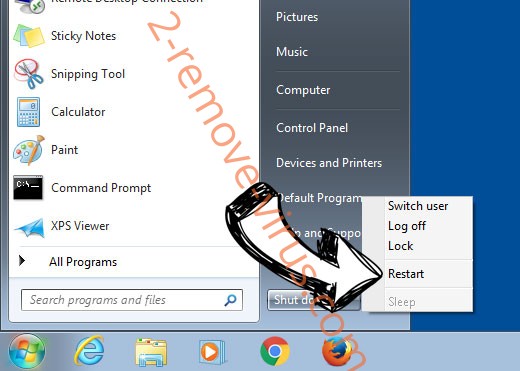
- Start tapping F8 when your PC starts loading.
- Under Advanced Boot Options, choose Safe Mode with Networking.

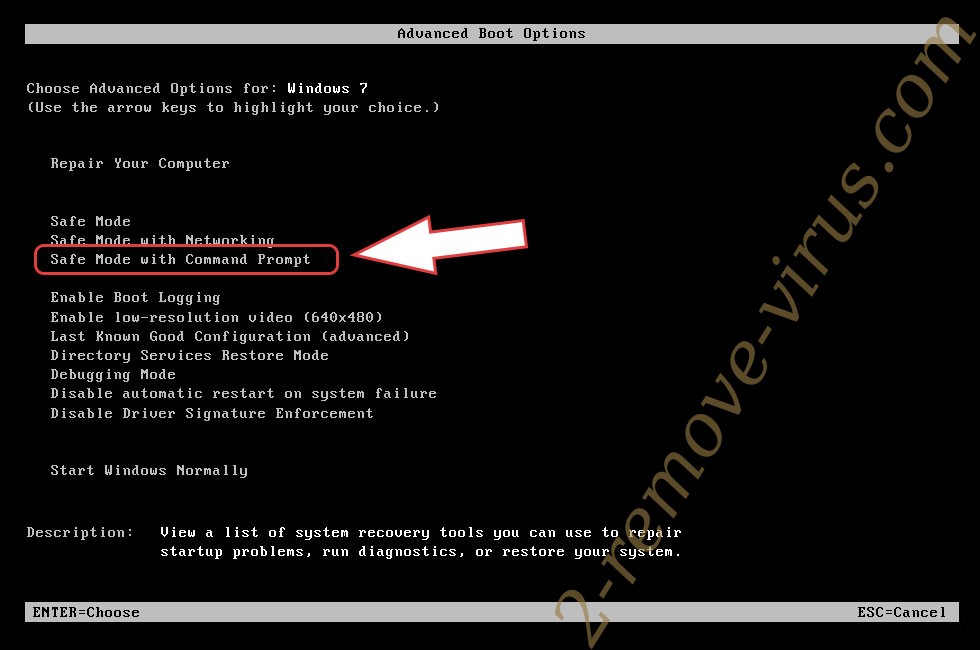
- Open your browser and download the anti-malware utility.
- Use the utility to remove LockBit ransomware
Remove LockBit ransomware from Windows 8/Windows 10
- On the Windows login screen, press the Power button.
- Tap and hold Shift and select Restart.

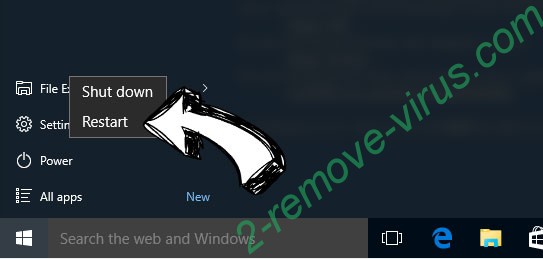
- Go to Troubleshoot → Advanced options → Start Settings.
- Choose Enable Safe Mode or Safe Mode with Networking under Startup Settings.

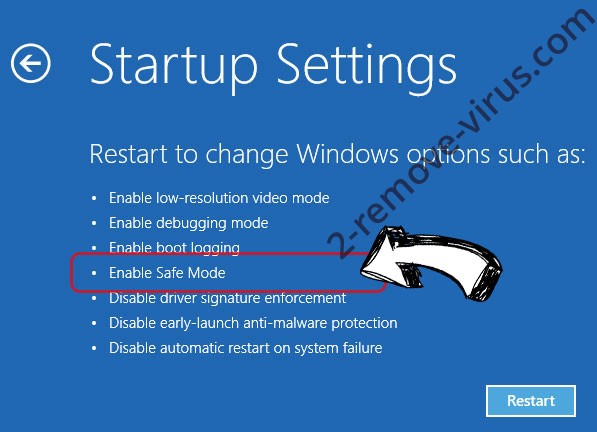
- Click Restart.
- Open your web browser and download the malware remover.
- Use the software to delete LockBit ransomware
Step 2. Restore Your Files using System Restore
Delete LockBit ransomware from Windows 7/Windows Vista/Windows XP
- Click Start and choose Shutdown.
- Select Restart and OK


- When your PC starts loading, press F8 repeatedly to open Advanced Boot Options
- Choose Command Prompt from the list.

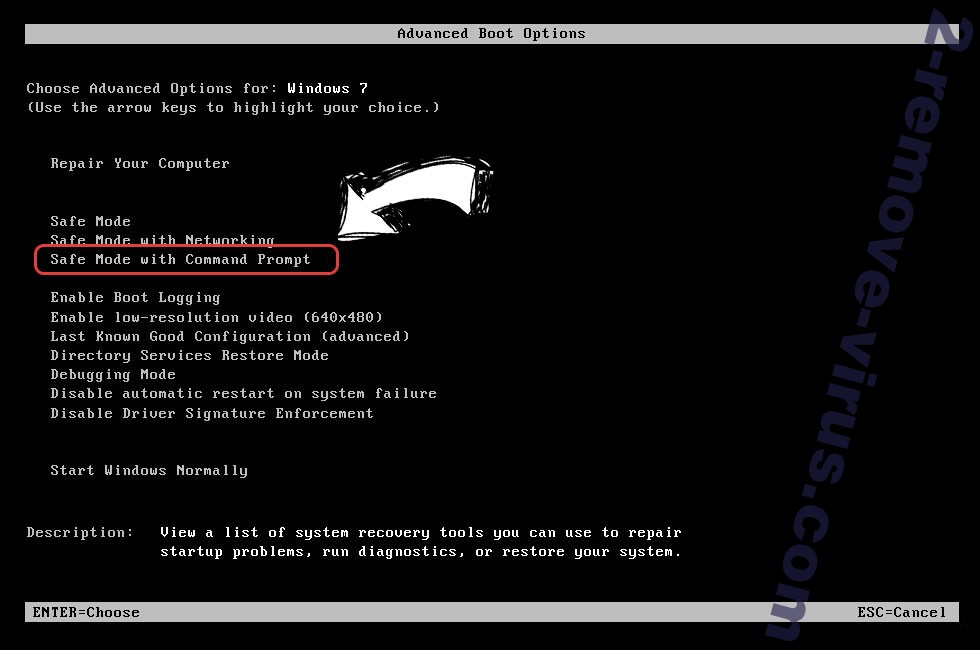
- Type in cd restore and tap Enter.

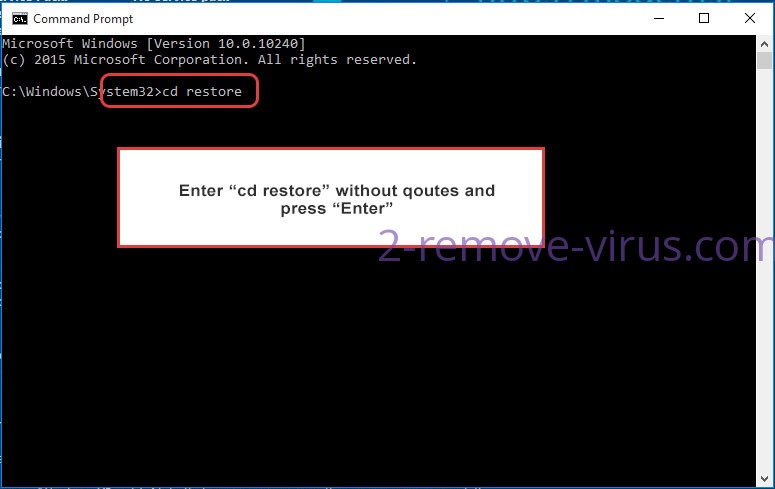
- Type in rstrui.exe and press Enter.

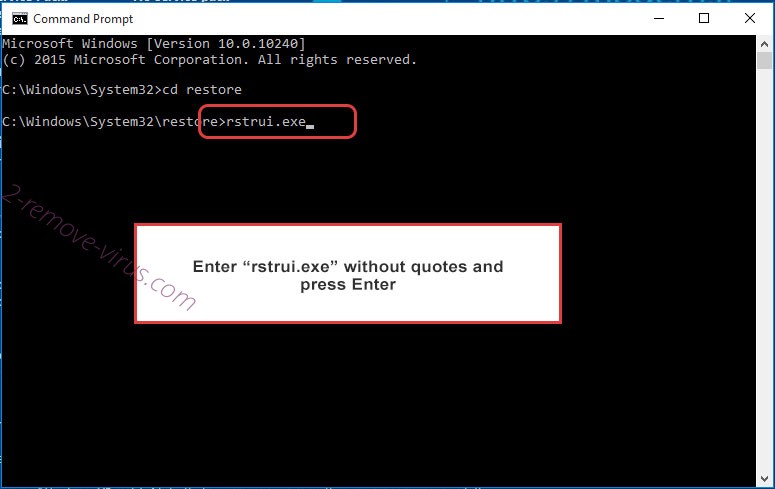
- Click Next in the new window and select the restore point prior to the infection.

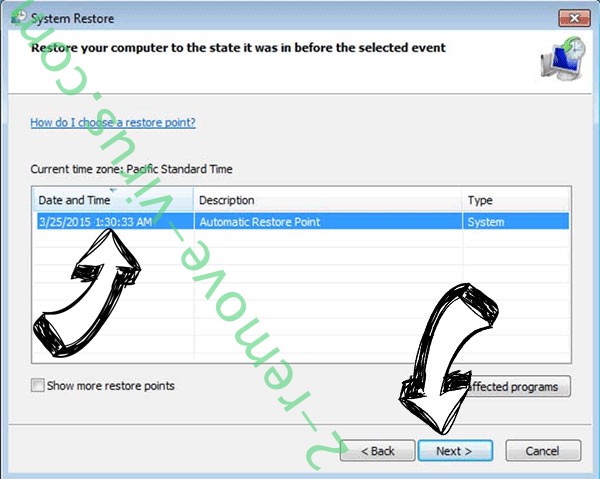
- Click Next again and click Yes to begin the system restore.

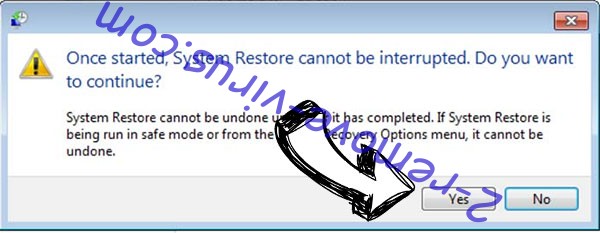
Delete LockBit ransomware from Windows 8/Windows 10
- Click the Power button on the Windows login screen.
- Press and hold Shift and click Restart.


- Choose Troubleshoot and go to Advanced options.
- Select Command Prompt and click Restart.

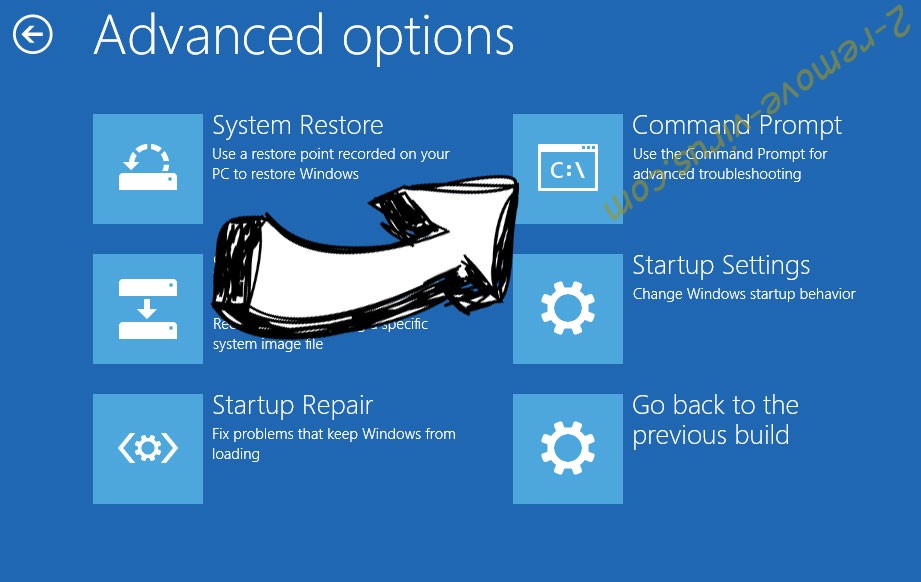
- In Command Prompt, input cd restore and tap Enter.


- Type in rstrui.exe and tap Enter again.


- Click Next in the new System Restore window.

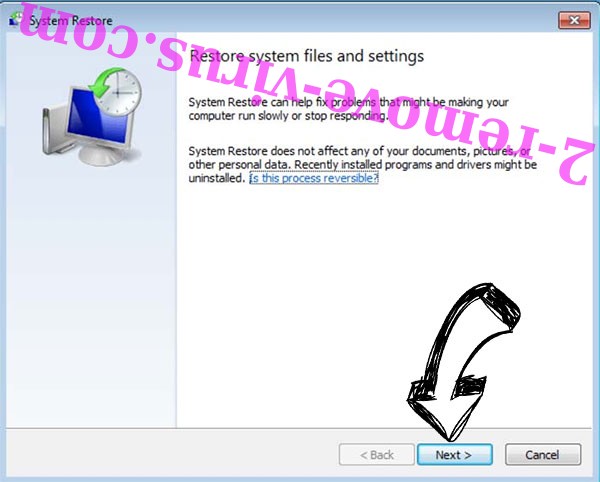
- Choose the restore point prior to the infection.


- Click Next and then click Yes to restore your system.


Site Disclaimer
2-remove-virus.com is not sponsored, owned, affiliated, or linked to malware developers or distributors that are referenced in this article. The article does not promote or endorse any type of malware. We aim at providing useful information that will help computer users to detect and eliminate the unwanted malicious programs from their computers. This can be done manually by following the instructions presented in the article or automatically by implementing the suggested anti-malware tools.
The article is only meant to be used for educational purposes. If you follow the instructions given in the article, you agree to be contracted by the disclaimer. We do not guarantee that the artcile will present you with a solution that removes the malign threats completely. Malware changes constantly, which is why, in some cases, it may be difficult to clean the computer fully by using only the manual removal instructions.
